This easy, baked chickpea frittata is the perfect make-ahead savory breakfast or snack! Baking the frittata gives it a light texture and makes the preparation a hands-off process. Serve slices with your favorite fresh fruit, roasted sweet potatoes, or whatever you like.
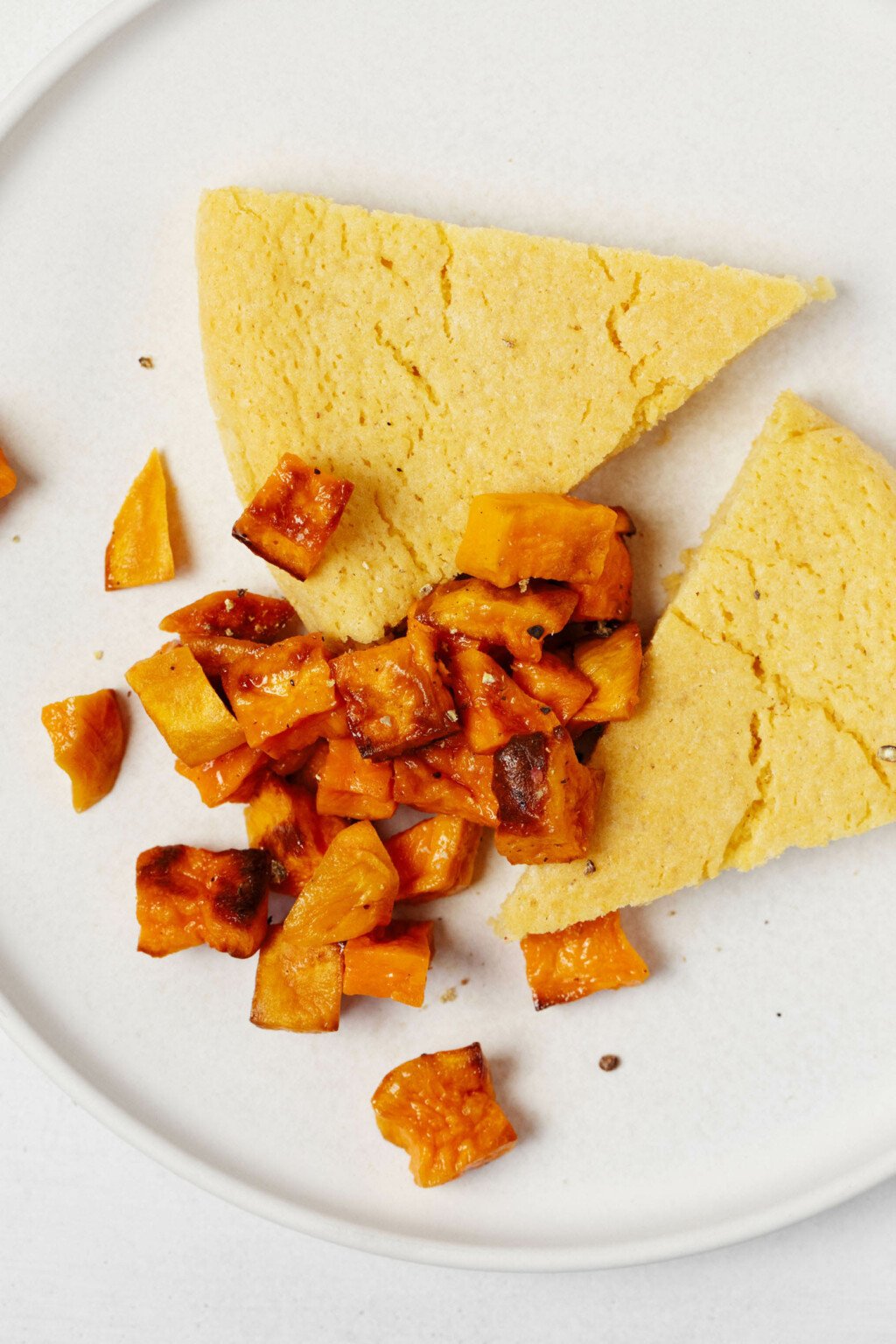
Months ago, when I was in Amsterdam, I visited a cozy vegan coffee and pastry shop called Koffee Ende Koeck.
One of the menu items there was a chickpea frittata.
Chickpea frittatas aren’t new to me. I’ve made a few versions at home, and I’ve also made many different attempts at socca.
This frittata was different. It had a lighter and more plump texture than I was used to, a firm, baked top, and a wonderfully salty, savory flavor.
At the cafe, they served wedges of the frittata by the slice, so that one could take it away as a snack. I ended up doing this, for my flight home.
They also served the frittata in a breakfast sandwich.
I ended up liking the frittata so much that I asked the cafe owner if she’d share the recipe with me. Luckily for me, she was kind enough to do this, and so I now have the pleasure of sharing it with you.
What is a chickpea frittata?
A chickpea frittata, at least in this case, is made with a batter of chickpea flour and water.
This batter is poured into a round baking dish, then transferred to the oven. The dish could be a skillet or frying pan, which are the typical for egg frittatas, or it could be a round cake pan, which is what I like to use.
During baking, the chickpea flour mixture will puff up and set. In the end, you ought to have a firm, spongy mixture that has a savory, salty flavor.
The texture of this chickpea frittata isn’t precisely reminiscent of egg. For that, I’ve had better luck using tofu (there’s a tofu and potato frittata in The Vegan Week that I’m crazy about).

The Vegan Week
Embrace the joy of eating homemade food every day with the hearty and wholesome recipes in The Vegan Week.
Whether you have three, two, or even just one hour of time to spare, The Vegan Week will show you how to batch cook varied, colorful, and comforting dishes over the weekend.
Yet this frittata has certain qualities that I think make it comparable to a transitional, egg-based frittata.
First and foremost, it has a slightly eggy flavor and plenty of savoriness.
Moreover, it’s versatile in the same way that a frittata can be.
You can slice it and enjoy it in the morning with toast and fruit. You can put it into a sandwich. You can have a wedge when you’re in the mood for a savory snack.
A slice of the frittata can also be added to a salad or bowl as a protein component.
Vegan chickpea frittata ingredients
The ingredients for this chickpea frittata were passed to me by Ruby, who’s the co-owner of Koffie Ende Koeck.
There are other ways to make chickpea frittatas, of course, other combinations of ingredients and methods.
But I asked Ruby for her formula specifically because I was so impressed with her recipe; of the chickpea frittatas that I’ve tried, it was my favorite.
Here are the ingredients that she uses. I’ve modified her recipe to fit home kitchens and my own preferences, but the backbone of the recipe is hers.
You’ll notice that this recipe calls for a few ingredients, like rice flour and xanthan gum, that don’t appear in most of my baked goods.
This is intentional, to honor and endorse Ruby’s recipe. Her recipe is gluten-free by design, so this one also has that to offer to my wheat and gluten-free readers.
However, I give some ideas for simple substitutions and swaps below if you see ingredients that are tough for you to source.
Chickpea flour
The chickpea frittata isn’t made with whole chickpeas, but rather, with chickpea flour.
If chickpea flour is a new ingredient for you, then it’s worth checking out. You can use it in this frittata, of course, but once you have a bag of it at home, you’ll be able to find other uses.
I use chickpea flour in socca, which is a flatbread that’s similar to this recipe, but more thin and crispy.
I’ve also used chickpea flour in baked goods that are gluten-free. For example, you can try putting it into the topping of a crisp or crumble.
Rice flour
If you regularly make gluten-free baked goods, then you may well have rice flour at home already.
Rice flour can be used in gluten-free muffins, cookies, and cakes. It can also be used to make pancakes and crepes.
Rice flour helps to bind the frittata and adds a fine, light texture. You can use either white rice flour or superfine brown rice flour in the recipe.
If you don’t have rice flour at home, you can try unbleached, all-purpose flour, potato starch, or cake flour instead.
Kala namak
Kala namak, also sold as black salt, has a high sulfur content.
This high sulfur content means that the salt can add eggy flavor to egg-like vegan dishes. I add a big pinch of kala namak to my tofu scramble recipes all the time, and I also use it to season this frittata.
Kala namak can often be found in natural grocers, such as Whole Foods. You can also purchase it from online spice retailers or on Amazon. If you don’t have Kala namak, then you can add a pinch of fine sea salt instead.
Baking powder + vinegar
The mixture of a chemical leavening agent (baking powder) and vinegar helps to make the frittata rise and achieve a fluffy texture.
Xanthan gum
Xanthan gum is a thickener that can help to bind gluten-free baked goods. It’s also useful to thicken dressings and sauces.
Xanthan gum tends to be expensive, but a little goes a very long way. Once you have some at home, xanthan gum has a long shelf life (up to three years!).
It’s possible to make this recipe without the xanthan gum; you’ll see that I’ve noted it as being optional. The main difference that you’ll notice if you omit it is that the frittata may be a little more crumbly.
Avocado oil
Avocado oil helps to prevent the frittata from becoming dry. It’s my vegetable oil of choice for cooking at higher temperatures.
However, you can replace the avocado oil with olive, grape seed, safflower seed, or canola oil, if you like.
How to make a baked chickpea frittata
Many of my experiments with vegan frittatas have been…messy. This particular recipe is easy! Here are the steps.

Step 1: Whisk together the dry ingredients
Begin by whisking your dry ingredients together in a large mixing bowl. Be sure to incorporate them fully.

Step 2: Add the wet ingredients
For many of my baking recipes, I whisk wet ingredients separately from dry, then combine the two. For this recipe, though, it’s fine to add your wet ingredients (water, avocado oil, and vinegar) directly to the dry ones.
After that, whisk everything together till smooth. A few small lumps in the batter are OK.

Step 3: Bake
You’ll bake the chickpea frittata in a parchment-lined or nonstick, round baking pan for pan for 18-22 minutes, or until the top of the frittata is firm and the sides are just turning golden.
I use an 8-inch / 20cm baking pan, but a 9-inch / 23cm will work as well.
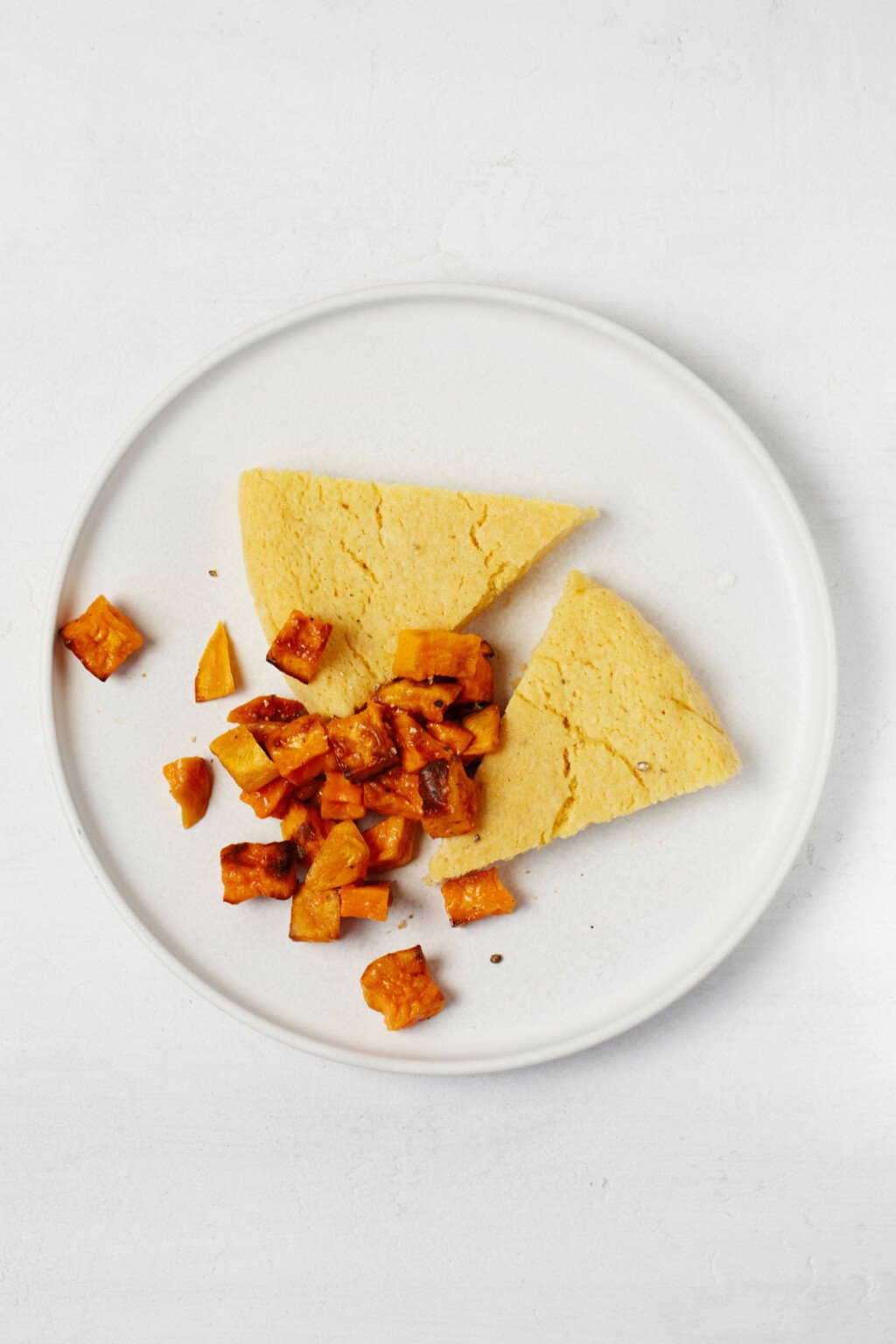
Step 4: Cut into wedges and enjoy
Give the frittata about 20 minutes of cooling time before you invert it to remove it from the pan, then slice it into wedges.
The frittata can make as few as four and as many as 8 wedges. You can decide whether you’d like a couple smaller wedges or some larger ones.
You can also decide how many servings this is, for you—a lot of that can depend on what you serve the frittata with.
Accompaniments and serving ideas
Speaking of that, there are so many excellent ways to serve this tasty breakfast or snack!
Here are some of my favorite accompaniments:
- A simple green salad
- Sweet potato red pepper soup
- Roasted sweet potato cubes
- Tofu feta kale salad
- Fresh fruit
- Toast with vegan butter
- Chickpea Greek salad
- Tempeh ratatouille
- Stewed eggplant tomato lentils
If you’re a fan of savory vegan breakfasts in general, I’ve got you covered.
And if you’re looking for more meal prep vegan breakfast ideas, this post may be helpful.

Storage and reheating
Store the frittata in an airtight container in the fridge for up to 5 days.
To be honest, I really like the wedges cold! But if you’d like to reheat, you can place them on a baking sheet and warm them in a 350°F oven for 10 minutes, or until hot, before enjoying.
You can also air fry them at 350°F for 7-10 minutes (check after 7 minutes to assure they’re not drying out) in an air fryer.
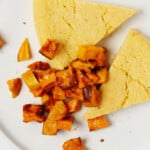
Easy Baked Chickpea Frittata
Author –Ingredients
- 3/4 cup chickpea flour (90g)
- 2 tablespoons white rice or ultrafine brown rice flour (20g)
- 1/8 teaspoon xanthan gum (optional)
- 1 teaspoon Kala namak (substitute sea salt)
- 2 teaspoons baking powder
- 7/8 cup water (210ml)
- 1 1/2 tablespoons avocado oil
- 1 teaspoon apple cider vinegar or freshly squeezed lemon juice
Instructions
- Preheat the oven to 425°F. Line the bottom of an 8-inch/20cm round cake pan with parchment paper or brush it lightly with avocado oil. (If you have a nonstick cake pan, the parchment and oil are helpful but not necessary.)
- In a large mixing bowl, combine the chickpea flour with the rice flour, xanthan gum, kala namak, and baking powder. Whisk these dry ingredients together. Add the water, oil, and vinegar. Continue whisking until the batter is smooth; it will be quite loose and pourable.
- Pour the batter into the prepared cake pan. Bake for 18-22 minutes, or until the top of the frittata is firm and the sides are just turning golden. Cut into wedges and enjoy.
Notes
It’s been great to have a chickpea flour recipe that doesn’t end up becoming either sticky or gluey—pitfalls that I’ve faced in the past.
I hope you’ll agree, and that you’ll find this frittata to be as useful and versatile as I do!
xo
This post may contain affiliate links. If you use these links to buy something I may earn a commission. Visit my privacy policy to learn more.
Method: Oven
Ingredients: Chickpeas
Dietary Preferences: Gluten Free, Soy Free, Tree Nut Free, Vegan
Recipe Features: Meal Prep


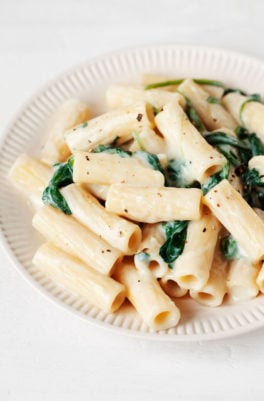

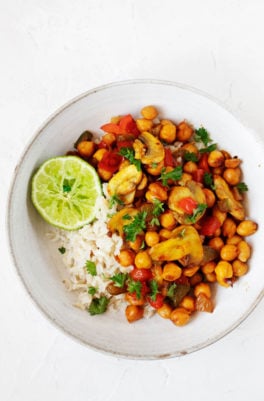
Leave a Comment
Love the idea to lighten the chickpea frittata. I’ve made socca many times: tasty, but rather dense in texture. I read your recipe here, and wanted to make a version of this recipe, but instead of adding xanthan gum, I folded in whipped aquafaba…success. Not a soufflé, by any means, but much lighter than my usual chickpea frittata, and delish. Thanks for prompting the idea.
Hi Gina. Love hearing about your modification and glad to know that it works. I love the lightness of the recipe, too—hope you continue to enjoy it!
SO WOW